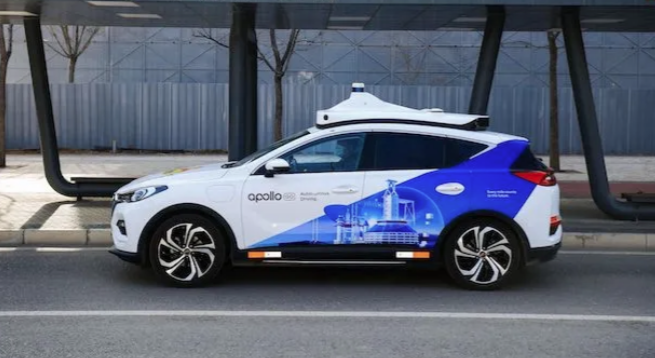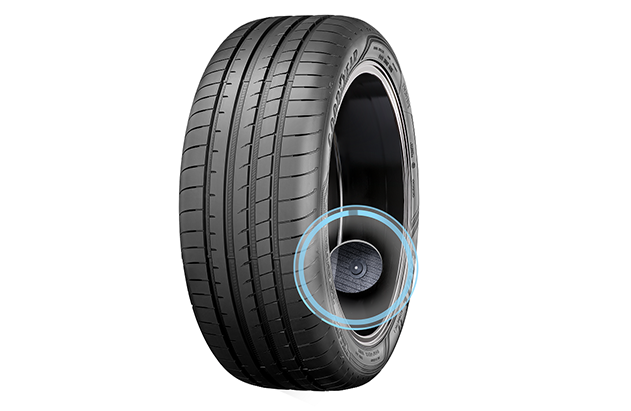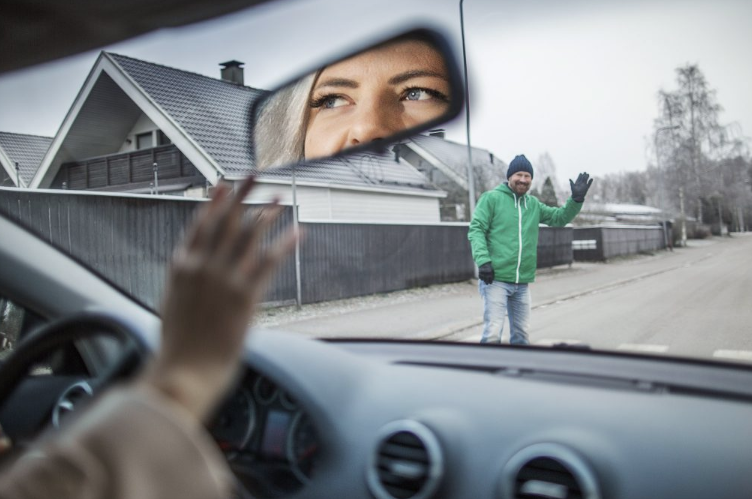Drive Safely: European Road Safety Innovations assessed
Over the past five years or so, Europe has witnessed significant advancements in road safety technology, driven by a combination of innovative companies, forward-thinking national policies, and a collective commitment to the Vision Zero goal of eliminating road fatalities by 2050.

(Credit: Bianco Blue/Dreamstime.com)
These developments have not only transformed the road safety landscape but have also contributed to a notable decrease in road deaths across the continent – Intertraffic takes a look at some of the countries and companies that are having a positive effect on the statistics.
Talk of pioneering companies in the road safety technology sector and the conversation invariably turns to China at some point, and equally invariably, how long it is going to be until their presence is felt on Europe’s road networks.
Talk of pioneering companies in the road safety technology sector and the conversation invariably turns to China at some point
Europe looking East for insipiration?
Chinese autonomous vehicle companies are making inroads into the European market. WeRide, in partnership with Uber, plans to deploy robotaxis in 15 cities outside the US and China over the next five years. This collaboration aims to enhance the safety and scalability of WeRide's self-driving technology by leveraging Uber's existing infrastructure, allowing WeRide to focus on autonomous technology and regulations. Notably, WeRide has operated for over 2000 days without a recorded accident, underscoring its commitment to safety, it says.

Baidu Apollo Go
Similarly, Baidu, China's leading robotaxi operator, is in discussions to expand its autonomous driving services into Europe, initially targeting Switzerland and Turkey. This move is part of Baidu's broader international expansion strategy, with plans to establish a Swiss office by the end of 2025. Baidu's Apollo Go service delivered 1.1 million rides in Q4 2024 alone, indicating that the company, in the autonomous mobility space at least, means business.
Baidu, China's leading robotaxi operator, is in discussions to expand its autonomous driving services into Europe, initially targeting Switzerland and Turkey
Smart Tyres for Enhanced Safety
Goodyear has introduced connected smart tyres equipped with sensors capable of detecting hazardous road conditions, such as rain and ice. These tyres integrate with a vehicle's driver-assist systems to trigger automatic emergency braking (AEB) earlier in adverse conditions, thereby improving braking distances and reducing the likelihood of collisions. This innovation addresses the limitations of existing AEB systems, especially in low-friction scenarios, and is poised to become a critical safety feature in future vehicles.

Goodyear Smart Tyres
To combat distracted driving, the cause of up to 25% of all road traffic accidents in Europe, companies such as Seeing Machines and Smart Eye have developed AI-based driver monitoring systems (DMS). These systems use in-car cameras to analyse eye gaze, head movement, and other indicators to detect dangerous driving behaviours such as distraction and drowsiness. The technology is designed to alert drivers in real-time, thereby preventing potential accidents. Notably, this technology will be mandatory in new cars in Europe from next year, reflecting its importance in enhancing road safety.
![]()
Smart Eye AI Eye Tracker
To combat distracted driving, the cause of up to 25% of all road traffic accidents in Europe, companies such as Seeing Machines and Smart Eye have developed AI-based driver monitoring systems
Another innovative solution is offered by Netun Solutions, based in Vigo, north-west Spain, who have developed the Help Flash, a signalling device for road safety used during vehicular breakdowns or accidents. The device automatically activates upon contact with the vehicle's metal roof, emitting a flashing light to alert other drivers. In Spain, these devices have been legal substitutes for emergency triangles since 1 July 2021, and are scheduled to definitively replace the triangles in 2026.

Netun Solutions Help Flash
Countries leading the way
Finland: Comprehensive Strategy and Education
Finland has achieved a remarkable 29% reduction in road deaths over the decade, significantly outperforming the EU average decline of 16%. This success is attributed to Finland's comprehensive Traffic Safety Strategy, which includes lower speed limits in urban areas, construction of pedestrian and bicycle paths, and the installation of automatic speed cameras on nearly 3000km of main roads. Furthermore, Finland conducts in-depth investigations of every fatal collision, ensuring continuous improvement in road safety measures.

Finland Traffic Safety Strategy (Credit: Finnish Road Safety Council)
Poland: Infrastructure and Enforcement Enhancements
Poland has made significant strides in road safety, earning the European Transport Safety Council’s Road Safety Performance Index Award in 2023. Key initiatives include the National Road Safety Programme 2021-2030, a four-year Safe Road Infrastructure Programme, expansion of speed camera networks, and increased drink-driving enforcement checks. These measures have collectively contributed to a substantial reduction in road deaths.
Poland has made significant strides in road safety, earning the European Transport Safety Council’s Road Safety Performance Index Award in 2023
Germany: Data-Driven Hazard Detection
Germany has embraced data-driven approaches to road safety through projects like FeGiS and EDDA+. These initiatives focus on the early detection of dangerous areas in road traffic by combining various data sources, including citizen reports and existing safety-relevant data. The resulting hazard score maps enable authorities to implement targeted safety measures, thereby proactively preventing accidents.
Innovative Developments That Are Transforming Road Safety
Intelligent Speed Assistance (ISA)
Intelligent Speed Assistance (ISA) systems are designed to prevent vehicles from exceeding speed limits. While the European Union mandates passive ISA systems that alert drivers, cities such as New York have piloted active ISA systems that automatically slow down vehicles exceeding speed limits. European studies suggest that ISA could reduce traffic fatalities by 26-50%, highlighting its potential impact on road safety.
Smart Infrastructure and AI Integration
Belgium is an example of a country that is investing in AI-driven traffic systems to reduce congestion and accidents. These systems use real-time data from sensors and cameras to optimise traffic signals and detect violations, enabling faster law enforcement responses. Belgium is also testing AI-powered autonomous buses that analyse pedestrian movement and adapt to road conditions, further enhancing safety.
Belgium is also testing AI-powered autonomous buses that analyse pedestrian movement and adapt to road conditions, further enhancing safety
Urban Safety Initiatives: Bologna's City 30
The Municipality of Bologna in Italy, has implemented the ‘Bologna City 30’ initiative, designating 70% of the city as a 30km/h zone. This initiative includes investments in pedestrian and cycling infrastructure, public awareness campaigns, and increased police patrols. Early data indicated a 14.5% drop in crashes and a 12.6% reduction in injuries, demonstrating the effectiveness of urban speed management in enhancing road safety. On its first day of operation the streets of the city were brought to a to standstill by drivers protesting at the new speed limit but the citizens of Bologna seem to have adapted over the last few months.

Bologna (Credit: Rigmanyi/Dreamstime.com)
Vision Zero on the horizon
Europe's commitment to road safety is evident through the collaborative efforts of innovative companies, proactive national policies, and community engagement. The integration of advanced technologies, many non-traditional in the road safety sphere, such as autonomous vehicles, smart infrastructure and AI-driven monitoring systems, has significantly contributed to reducing road fatalities.
As countries continue to invest in these initiatives, Europe moves closer to achieving its Vision Zero goal, ensuring safer roads and reducing the numbers of people killed and seriously injured on its roads.
Share your story
Do you have an innovation, research results or an other interesting topic you would like to share with the professionals in the infrastructure, traffic management, safety, smart mobility and parking industry? The Intertraffic website and social media channels are a great platform to showcase your stories!
Please contact our Sr Brand Marketing Manager Carola Jansen-Young.
Are you an Intertraffic exhibitor?
Make sure you add your latest press releases to your Company Profile in the Exhibitor Portal for free exposure.
Get up to speed on the mobility industry - our newsletter straight to your inbox!


